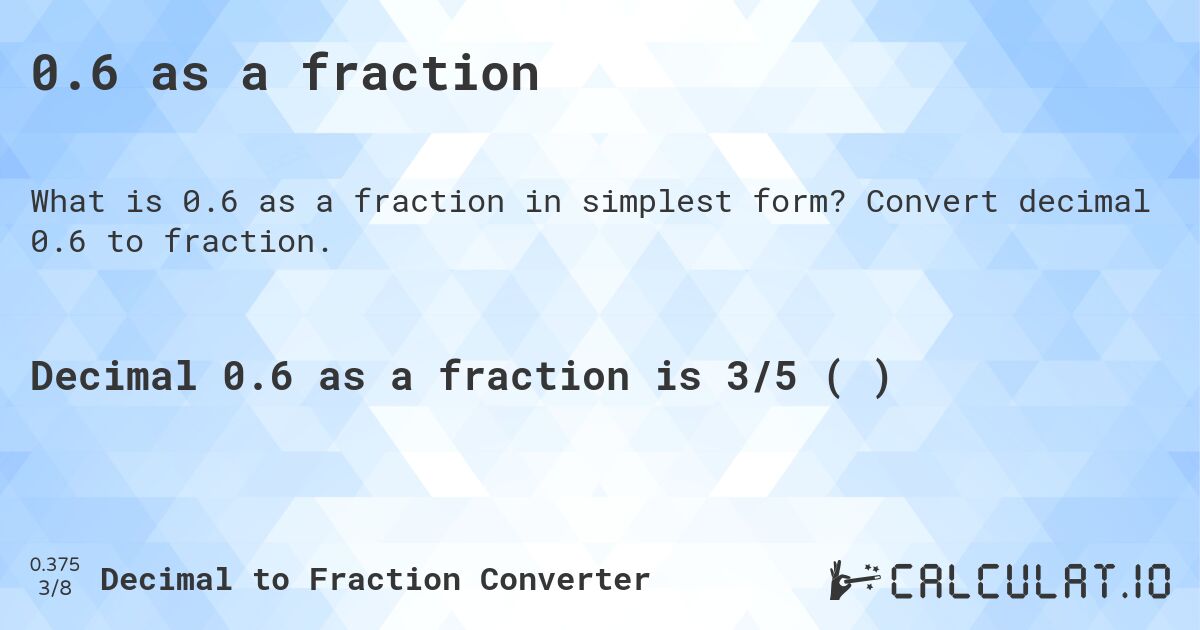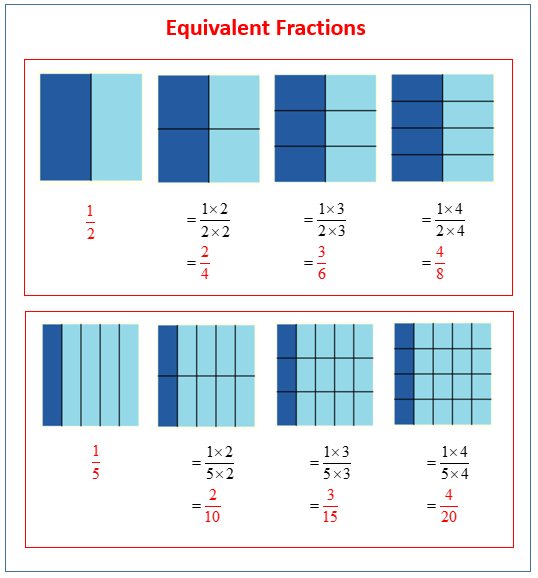As a child, I remember struggling with fractions. Converting decimals to fractions seemed like a magical process, a secret code that only math whizzes could decipher. It wasn’t until I discovered the simple logic behind it that fractions started to make sense. And one of the most common yet often puzzling conversions is turning 0.6 into a fraction. Let’s unlock the magic and make this conversion clear as day.

Image: calculat.io
From everyday measurements to financial calculations, understanding decimals and fractions is essential. Knowing how to convert 0.6 to a fraction isn’t just about passing a math test; it’s about building a deeper understanding of numbers and how they relate to one another. Let’s dive into the world of decimals and fractions, and explore the fascinating connection between 0.6 and its fractional equivalent.
Unveiling the Fraction Behind 0.6
At its core, 0.6 represents six-tenths. In the decimal system, each place value to the right of the decimal point signifies a power of ten in the denominator. So, 0.6 means 6 divided by 10, written as 6/10. Simple, right?
However, the journey doesn’t end there. We can simplify this fraction further. Both 6 and 10 are divisible by 2. Dividing both the numerator and denominator by 2 yields 3/5. And there you have it! 0.6 expressed as a fraction in its simplest form is 3/5. This straightforward process can be applied to any decimal, allowing you to easily convert between these two forms.
The Concept of Decimals and Fractions
Decimals and fractions are simply two different ways of representing the same numerical value. Decimals use a base-ten system, employing a decimal point to separate whole numbers from fractional parts. Fractions, on the other hand, express parts of a whole, with a numerator representing the number of parts and a denominator representing the total number of parts.
Think of a pizza. If you cut it into 10 equal slices and eat 6, you’ve consumed 6 out of 10 slices, or 6/10 of the pizza. This is equivalent to 0.6 of the pizza. Therefore, 0.6 and 6/10 represent the same portion of the pizza, just expressed in different forms.
Converting Decimals to Fractions: A Step-by-Step Guide
Converting a decimal to a fraction is a straightforward process that can be done in just a few steps:
- Identify the decimal places: Count the number of digits to the right of the decimal point. For instance, 0.6 has one digit after the decimal point.
- Place the decimal number over 1 followed by the same number of zeros as the decimal places: Since 0.6 has one digit after the decimal point, our denominator will be 10 (1 followed by one zero).
- Simplify the fraction: Divide both the numerator and denominator by their greatest common factor (GCF) to get the fraction in its simplest form.
Let’s illustrate with an example: Convert 0.25 to a fraction.
– 0.25 has two decimal places.
– Place 25 over 100 (1 followed by two zeros). This gives us 25/100.
– Simplify the fraction by dividing both numerator and denominator by 25, resulting in 1/4.
Therefore, 0.25 is equivalent to 1/4.

Image: pdfprof.com
Tips and Expert Advice for Decimal-to-Fraction Conversions
Converting decimals to fractions can seem daunting, but mastering a few tricks can make the process a breeze.
- Memorize common fractions: Knowing that 0.5 is 1/2, 0.25 is 1/4, and 0.75 is 3/4 can speed up your calculations.
- Use the decimal-to-fraction calculator: Online resources can quickly convert decimals to fractions for you. Check out calculator websites or use a smartphone app.
- Practice, practice, practice: The more you convert decimals to fractions, the more comfortable and confident you’ll become. Don’t shy away from working through numerous examples.
Understanding decimals and fractions is crucial for various aspects of life. From calculating discounts and tips to measuring ingredients in recipes, mastering decimal-to-fraction conversions can empower you to perform calculations more effectively.
Frequently Asked Questions (FAQs)
Why do we need to convert decimals to fractions?
Converting decimals to fractions allows us to express numbers in different formats, which can be more convenient in certain situations. Fractions are often easier to understand and manipulate, especially when dealing with fractions of whole objects.
What are some real-life applications of decimal-to-fraction conversions?
Decimal-to-fraction conversions are frequently used in various fields, including:
- Cooking: Measuring ingredients in fractions is common, and converting decimal amounts to fractions ensures precision.
- Finance: Understanding interest rates and calculating stock prices often involves fractions.
- Construction: Using fractions to represent measurements is crucial in construction projects.
- Science: Many scientific measurements rely on fractions and decimal conversions.
What if I get a decimal that doesn’t easily convert into a simple fraction?
Some decimals, like 0.33333, create repeating fractions. In such cases, you can express the fraction by dividing the repeating part of the decimal by a power of 10. For example, 0.33333 can be expressed as 3/9, which simplifies to 1/3.
06 In Fraction
Conclusion
Understanding decimals and fractions is an essential part of navigating the world of numbers. Knowing how to convert a decimal like 0.6 into its fractional form, 3/5, can enhance your everyday calculations and problem-solving skills. By practicing the methods described in this article, you can easily navigate the conversion process and confidently convert decimals into their fractional equivalents.
Are you interested in learning more about specific applications of decimal-to-fraction conversions in various fields? Let me know if you’d like to explore these areas further!






